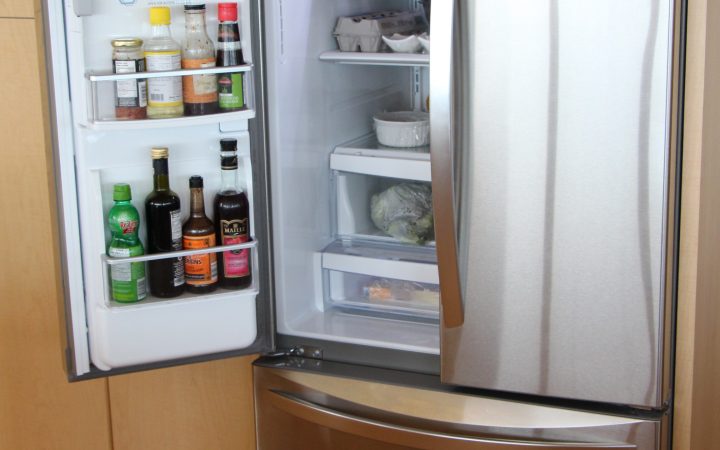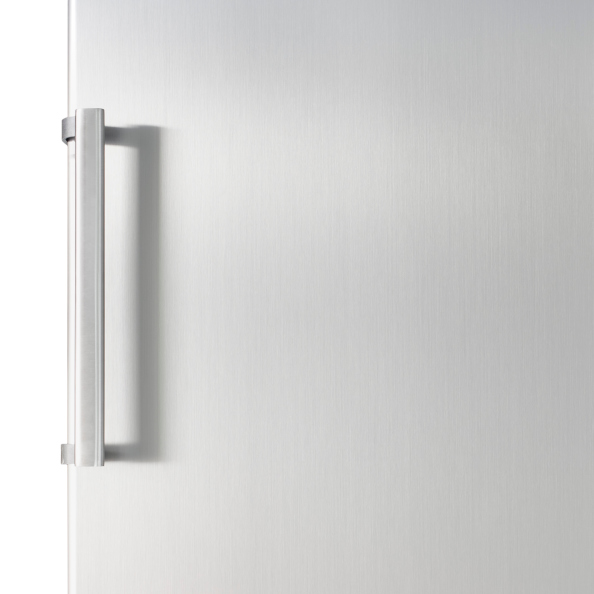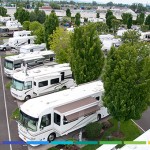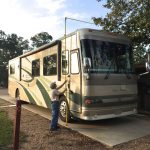 Recreation vehicle absorption refrigerators have been around for decades. Operating on propane or electric, these types of appliances have been ideal for off-the-grid camping. They do, however, have several shortfalls when compared to what you are used to at home. First, they have a reduced interior volume due to the shallow depth needed for the absorption system located at the rear of the unit. Second, this type of refrigerator must be relatively level while in operation. Failure to maintain this level positioning can cause crystallization in the cooling coil, resulting in possibly shortening the unit’s life. Also, compared to your residential refrigerator at home, these units usually do not have self-defrost or in-door ice and water dispensers, and in general do not deliver the cooling precision you may be used to.
Recreation vehicle absorption refrigerators have been around for decades. Operating on propane or electric, these types of appliances have been ideal for off-the-grid camping. They do, however, have several shortfalls when compared to what you are used to at home. First, they have a reduced interior volume due to the shallow depth needed for the absorption system located at the rear of the unit. Second, this type of refrigerator must be relatively level while in operation. Failure to maintain this level positioning can cause crystallization in the cooling coil, resulting in possibly shortening the unit’s life. Also, compared to your residential refrigerator at home, these units usually do not have self-defrost or in-door ice and water dispensers, and in general do not deliver the cooling precision you may be used to.
Full residential reefers have been standard on high-tiered coaches for many years and on“all-electric” builds (no propane onboard). These units required extra batteries and inverters to meet the additional off-grid electric load. Today’s home-type refrigerators, however, are far more efficient and require less power to operate than years ago. Residential refrigerators today operate at about one-third the power consumption they did in 1990. Therefore, we are now seeing a growing popularity of these electric-only reefers, not only in new coaches but as upgrades to existing units.
The residential refrigerators offer some great advantages over the absorption type. Here are a few:
- Far more inside space with the same-size exterior.
- Not as level sensitive.
- Far more inexpensive to replace than high-priced absorption units.
- More modern-frig features.
- Better temperature precision and cooling accuracy.
So, if you are thinking about buying a new coach, check out the availability of getting a residential fridge. If your current rig has an RV-type absorption unit, you may wish to consider joining the many who have opted for upgrading to a residential model. Much, of course, depends on your RV application. While the electric residential fridge is superior in many ways, it cannot necessarily deliver the endless off-grid needs of some die-hard dry campers.
Either way, it’s worth checking out. If you’re thinking of upgrading to a residential refrigerator in your current rig, be sure to add an appropriate-size inverter and battery bank, if needed. This is not that difficult and in most cases can be a do-it-yourself project.
It would certainly be a cool project, no pun intended. Enjoy.






Peter Mercer
Well the dealer was right, your truck should support the frig via an inverter. Perhaps the inverter was not turned on. There is something wrong, it should work without an issue. Contact the dealer, they should be able to tell you what went wrong, or at least go through the principle. Set up right, it should be good to go. I’m sorry you had to find out there was an issue in that manner. Thank you for taking the time to write.
Anonymous
We just bought a new Big Horn with a residential fridge. The dealer told us that when we are hooked up to our truck the alternator will keep the camper batteries charged to keep the fridge running. We just took a 500 mile trip to Michigan and when we arrived the food in the freezer had thawed out and the fridge was warm. We had to throw out our food. How is this supposed to work?
Peter Mercer
I am not aware of this issue. A very bumpy road could do something like this, but only in an empty refrigerator. Generally stocked shelve will assure the shelves stay in place. The items in the fridge, however, may not fair so well. I would contact the dealer your bought it from and see if they can help you. Of course, if your latest fix works, you are home free. Best of luck and thank you for your input.
Anonymous
We bought a 5th wheel with a rear ketchen. It came with a reidential refrigerator. When towing the 5th wheel the shelves inside refrigerator will come loss and fly around. I have tryed different ways of securing the shelves and have not found a good way to do this yet. Ordered new supports (ladders) so that I can drill holes through the sides so that I can place some cotter pins through the supports and there are small holes in the shelf support arms. Hoping this will work.